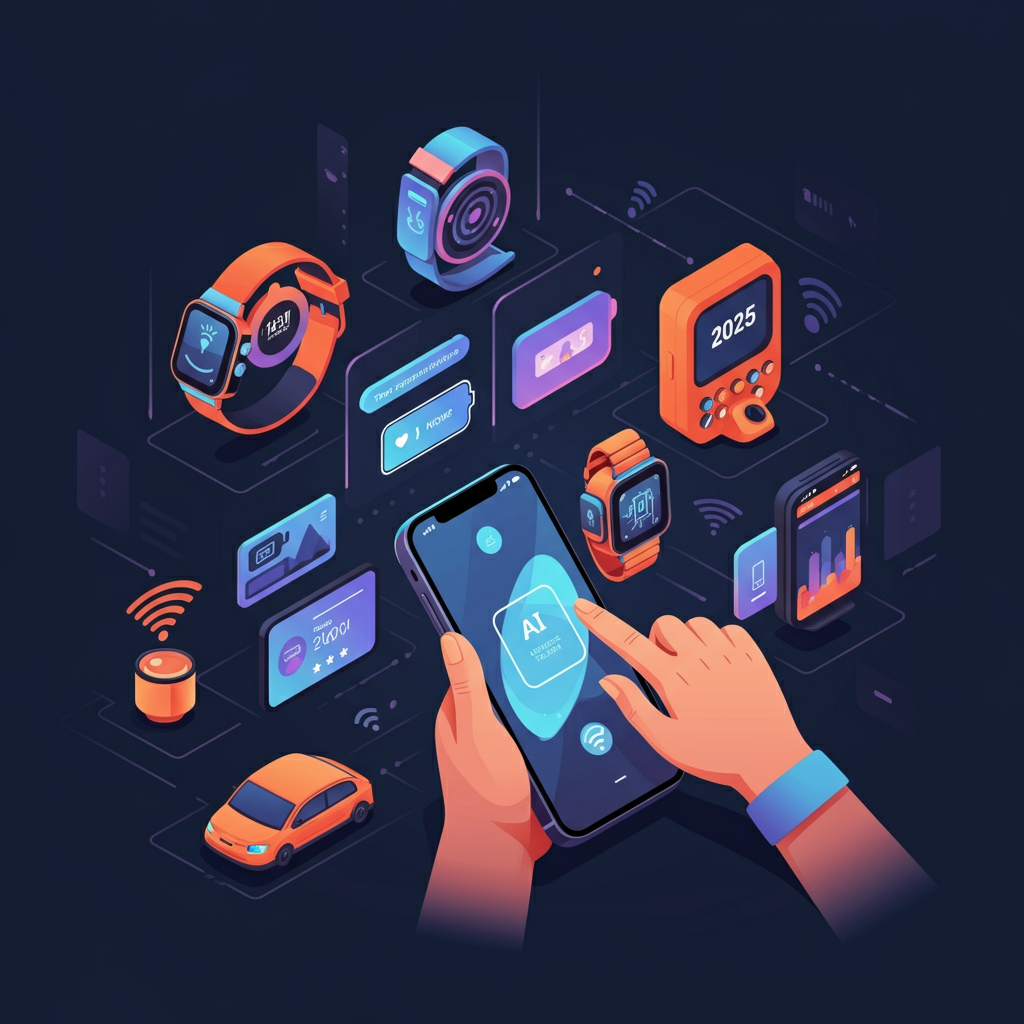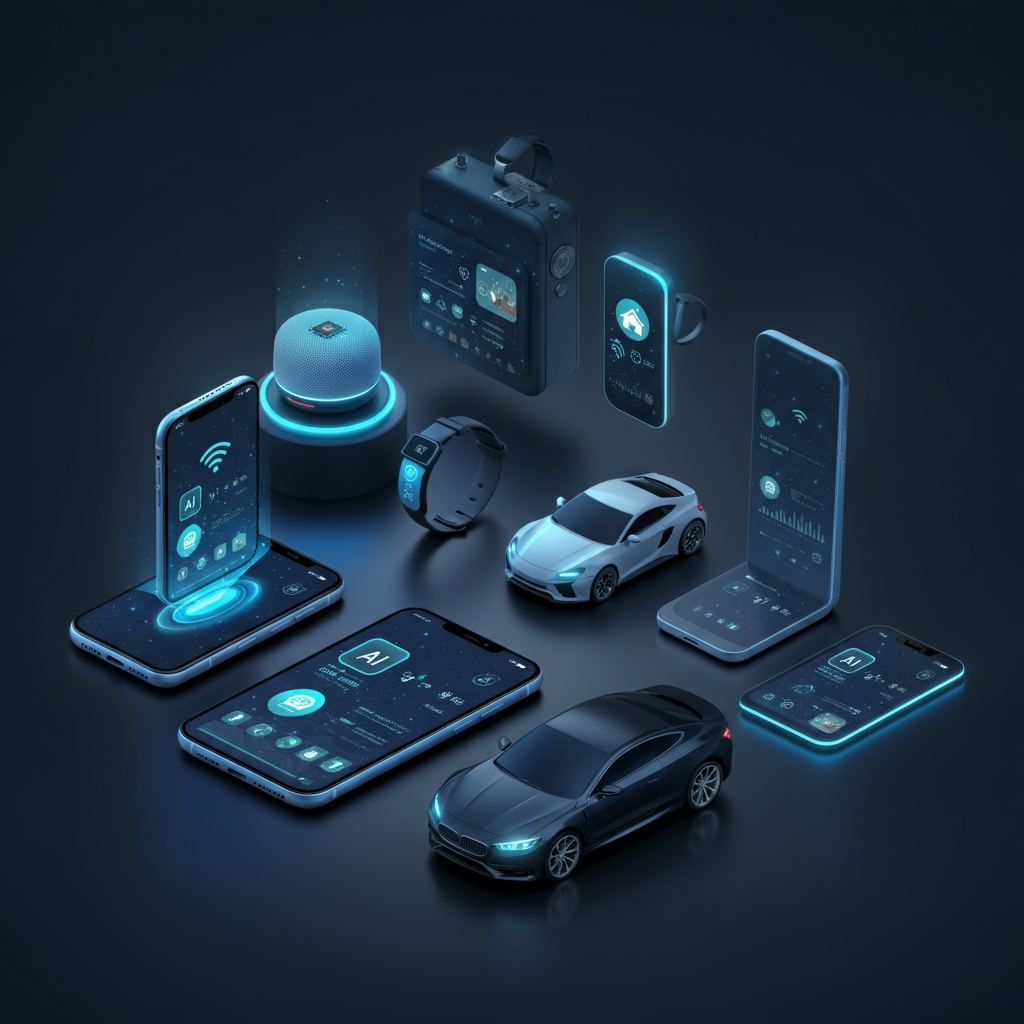
Last week, my grandmother called me to complain about her new smartphone. “It keeps finishing my sentences,” she said with a mix of frustration and wonder. What she didn’t realize was that she was experiencing one of the most significant technological shifts of our time—artificial intelligence seamlessly woven into our daily devices.
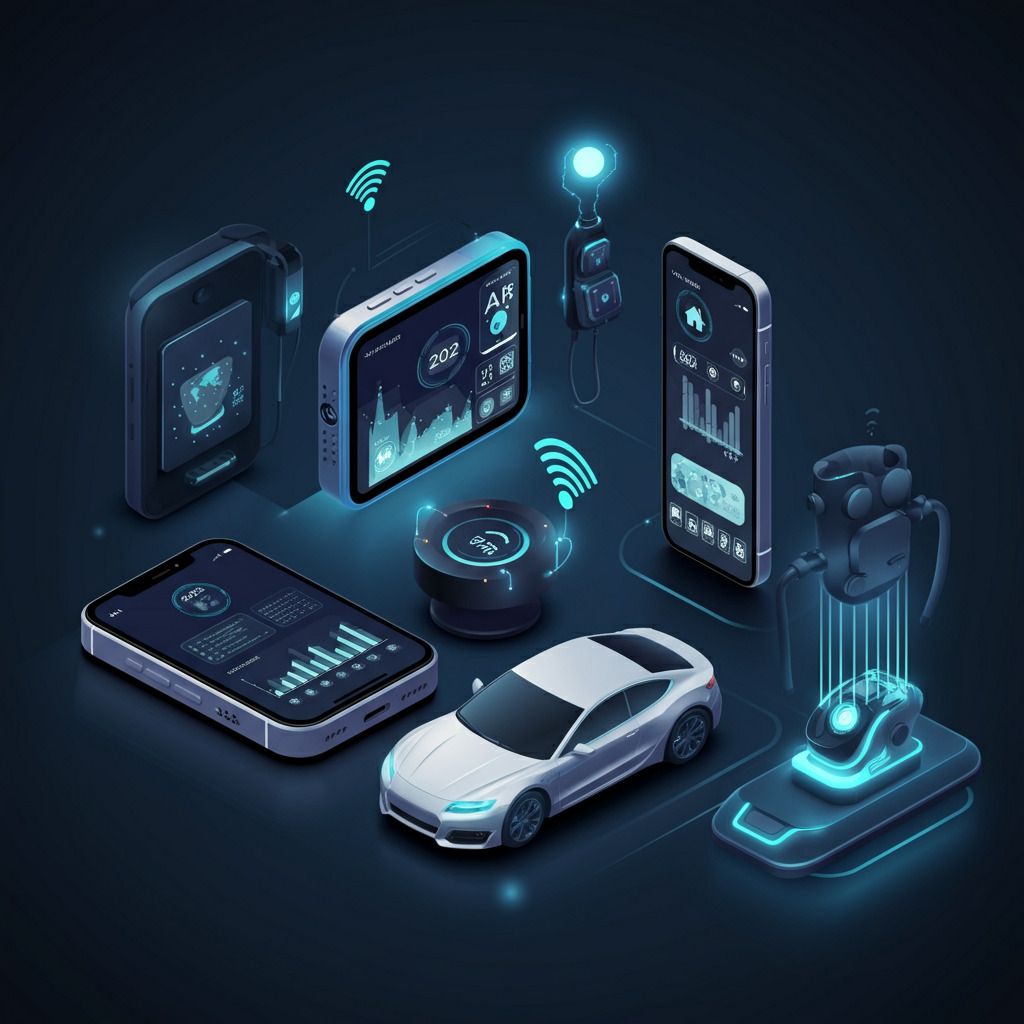
The year 2025 has marked a turning point where AI is no longer a futuristic concept but a present reality embedded in nearly every gadget we touch. From the moment we wake up to our AI-optimized alarm clocks to the smart home systems that dim our lights before bedtime, artificial intelligence has become the invisible hand guiding our digital experiences.
This transformation goes far beyond simple automation. AI is fundamentally changing how we interact with technology, creating devices that learn our preferences, anticipate our needs, and adapt to our behaviors. Whether it’s a smartphone that captures professional-quality photos with a single tap or a fitness tracker that provides personalized health insights, AI is enhancing user experience, efficiency, and personalization in ways we never imagined possible.
AI Enhancements in Smartphones
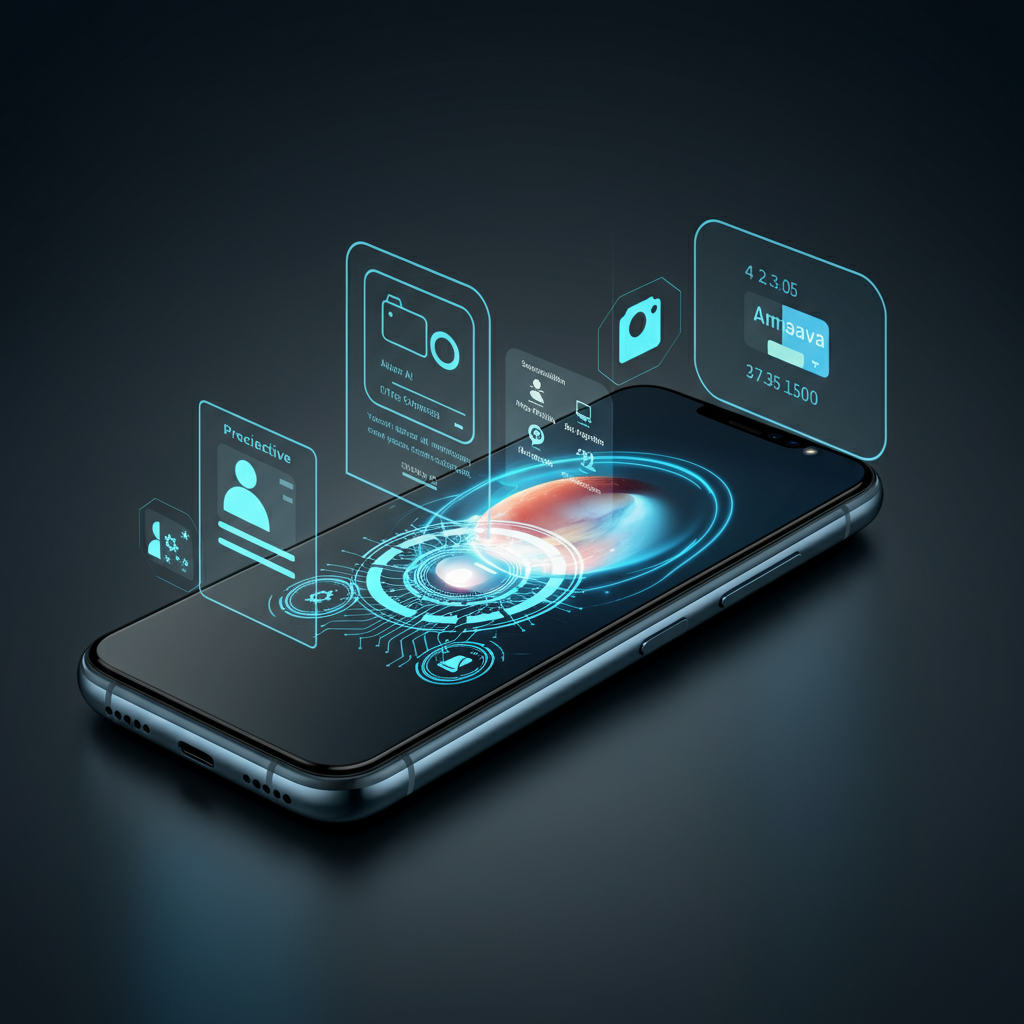
The smartphone revolution of 2025 has been quietly powered by AI advancements that most users take for granted. These pocket-sized computers have evolved from simple communication devices into intelligent companions that understand context, predict behavior, and deliver personalized experiences at an unprecedented scale.
Improved Camera Capabilities
Modern smartphone cameras have become photography studios in your pocket, thanks to AI-driven computational photography. The technology analyzes scenes in real-time, adjusting exposure, color balance, and focus to create images that rival professional equipment.
Apple’s latest iPhone models use machine learning algorithms to identify over 200 different scene types, from sunset portraits to busy street photography. The AI doesn’t just recognize what you’re photographing—it understands the context and emotion you’re trying to capture. Night mode photography, once impossible on mobile devices, now produces stunning low-light images by combining multiple exposures and reducing noise through neural networks.
Google’s Pixel series has pushed this even further with their “Magic Eraser” feature, which uses AI to intelligently remove unwanted objects from photos. The technology doesn’t just delete pixels; it reconstructs the background based on surrounding context, creating seamless results that look naturally edited.
Enhanced Voice Assistants
Voice assistants have evolved from simple command-response systems to conversational AI that understands context, tone, and intent. Siri, Google Assistant, and Samsung’s Bixby now engage in multi-turn conversations, remembering previous interactions and building on them.
The breakthrough comes from large language models that process natural speech patterns. These systems can now handle complex queries like “Remind me to call Mom about the recipe we discussed last Tuesday when I get home from work.” The AI understands the temporal context, personal relationships, and location-based triggers all within a single sentence.
Samsung’s recent implementation includes emotional intelligence features that can detect stress levels in your voice and adjust responses accordingly. If you sound frustrated, the assistant might offer calming music or suggest taking a break—a level of empathy previously impossible in digital interactions.
AI-Driven Battery Management
Battery anxiety has plagued smartphone users for years, but AI is finally solving this persistent problem. Modern devices use machine learning to analyze usage patterns and optimize power consumption in real-time.
iOS 18 introduced “Predictive Battery Management” that learns your daily routine and pre-loads frequently used apps during low-power periods. If you typically check social media at 7 AM, the system ensures those apps are ready while conserving energy for less predictable activities.
Android devices have implemented similar features with “Adaptive Battery” technology that identifies which apps you’re likely to use in the next few hours and limits background activity for others. This isn’t just about extending battery life—it’s about creating a more responsive user experience by prioritizing resources for relevant tasks.
Smart Home Devices
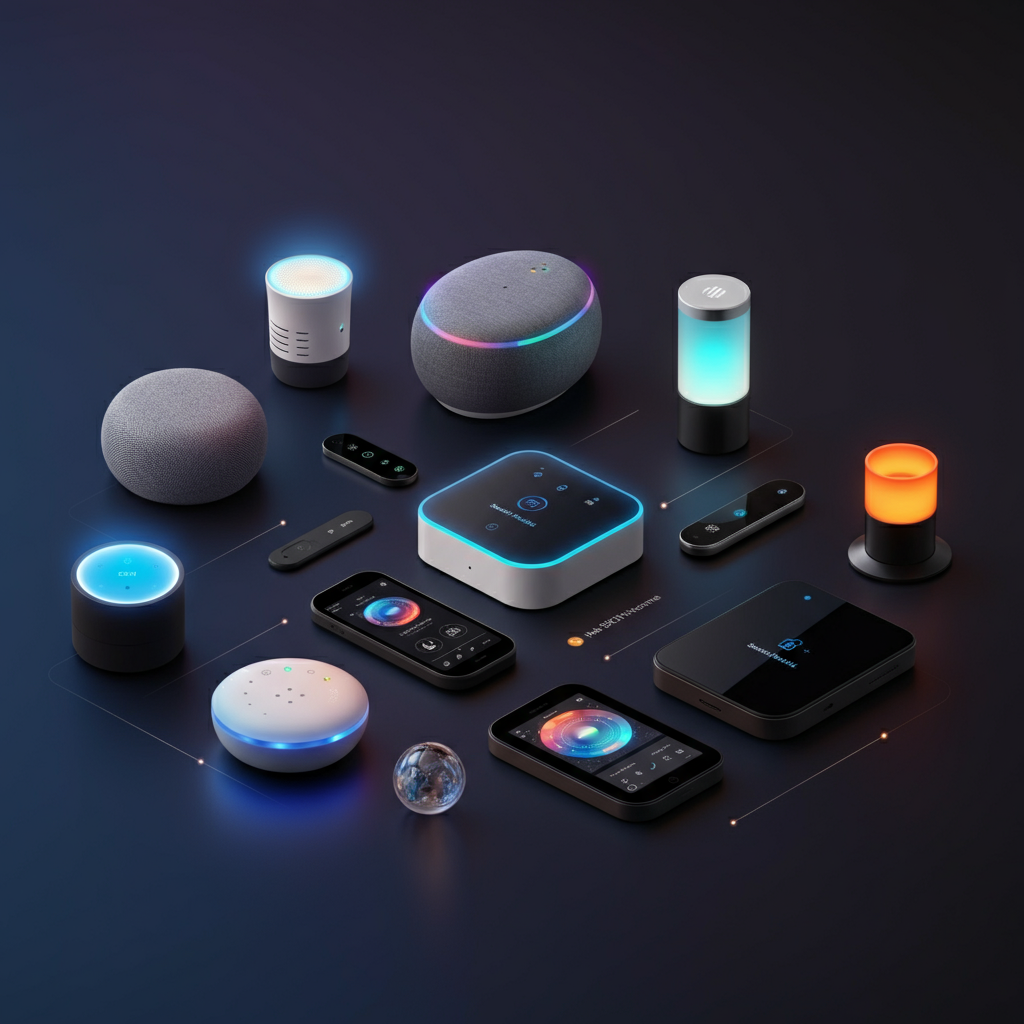
The connected home has transformed from a novelty into a necessity, with AI serving as the central nervous system that makes everything work together seamlessly. Smart home adoption has surged, with over 75% of U.S. households now owning at least one connected device.
Enhanced Security Systems
Home security has been revolutionized by AI’s ability to distinguish between normal and suspicious activity. Modern security cameras don’t just record—they analyze and interpret what they see, reducing false alarms while improving actual threat detection.
Ring’s latest doorbell cameras use facial recognition to identify family members, delivery personnel, and strangers. The system learns over time, becoming more accurate at recognizing familiar faces and reducing unnecessary notifications. More importantly, it can detect unusual behavior patterns, like someone lingering near your property or attempting to peer through windows.
AI-powered security systems now integrate multiple data sources—motion sensors, door locks, window sensors, and cameras—to create comprehensive threat assessments. If someone opens a window while the system detects no one should be home, it doesn’t just sound an alarm; it analyzes the situation and can differentiate between a break-in and a family member arriving unexpectedly.
AI-Powered Entertainment
Entertainment systems have become increasingly intelligent, curating content that matches not just your preferences but your current mood and context. Netflix’s recommendation algorithm has evolved to consider factors like time of day, recent viewing history, and even pausing patterns to suggest content.
Spotify’s “DJ” feature uses AI to create personalized radio shows complete with commentary tailored to your music taste. The system analyzes your listening habits, favorite genres, and even the time you typically listen to certain types of music to create seamless, contextually appropriate playlists.
Smart speakers like the Amazon Echo and Google Nest have become entertainment hubs that understand family dynamics. They can recognize different voices and provide age-appropriate content, switching from children’s music to adult playlists automatically based on who’s speaking.
Intelligent Automation
The true power of smart homes lies in automation that feels natural and unobtrusive. AI systems now learn your routines and automate tasks without explicit programming, creating personalized experiences that adapt to your lifestyle.
Nest thermostats analyze your schedule, local weather patterns, and home occupancy to maintain optimal comfort while minimizing energy consumption. The system learns that you prefer slightly cooler temperatures when working from home versus weekends and adjusts accordingly.
Smart lighting systems like Philips Hue use AI to create lighting scenes that match your circadian rhythms, gradually shifting color temperature throughout the day to support natural sleep patterns. These systems can even detect when you’re watching TV and automatically dim ambient lighting for optimal viewing conditions.
Wearable Technology
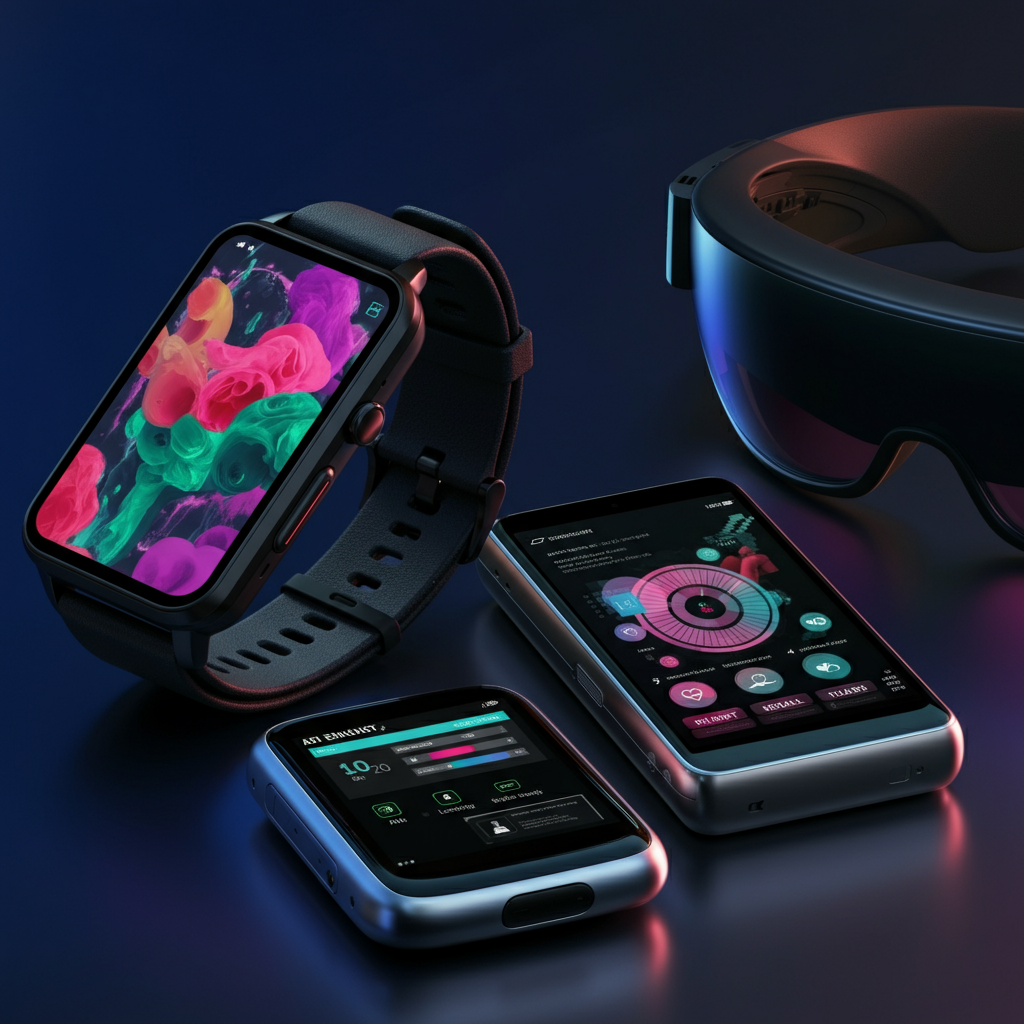
Wearable devices have evolved from simple step counters to sophisticated health monitoring systems that provide insights previously available only through medical testing. The integration of AI has made these devices more accurate, predictive, and personally relevant.
Advanced Health Monitoring
The Apple Watch Series 9 can now detect irregular heart rhythms, sleep apnea, and early signs of illness through continuous monitoring and AI analysis. The device doesn’t just collect data—it interprets patterns and provides actionable health insights.
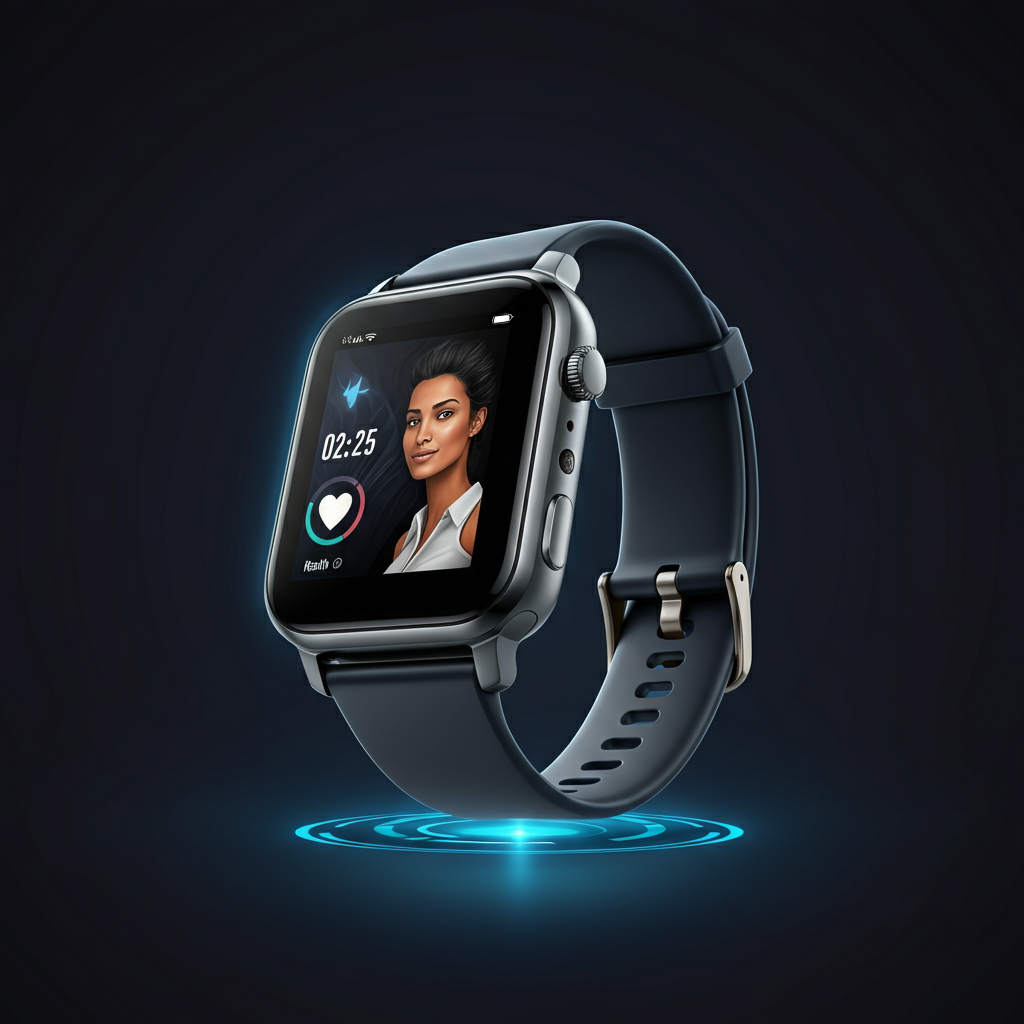
Continuous glucose monitors like the Dexcom G7 use AI to predict blood sugar trends, alerting diabetics to potential issues before they become critical. The system learns individual patterns and can distinguish between normal fluctuations and concerning trends, reducing false alarms while improving safety.
Sleep tracking has become remarkably sophisticated, with devices like the Oura Ring analyzing sleep stages, heart rate variability, and body temperature to provide comprehensive sleep quality assessments. The AI can identify factors that improve or worsen sleep quality, offering personalized recommendations for better rest.
Personalized Fitness Coaching
Fitness wearables have transformed from passive trackers to active coaching systems that provide real-time guidance and motivation. These devices use AI to create personalized workout plans, monitor form, and adapt routines based on progress and preferences.
Fitbit’s AI coach analyzes your fitness level, available time, and preferred activities to create dynamic workout plans. If you miss a planned gym session, the system automatically adjusts your weekly schedule and suggests alternative activities that fit your current circumstances.
The Garmin Forerunner series uses AI to analyze running gait, cadence, and efficiency, providing detailed feedback on form and technique. The system can detect when you’re overtraining or at risk of injury, recommending rest days or recovery activities.
Seamless Integration
Modern wearables excel at integrating with other devices and services to create comprehensive health and fitness ecosystems. This integration goes beyond simple data sharing—AI systems synthesize information from multiple sources to provide holistic insights.
Apple’s Health app uses AI to correlate data from various sources—step count, heart rate, sleep quality, nutrition intake, and even mood tracking—to identify patterns and provide personalized recommendations. The system might notice that your sleep quality improves on days when you exercise in the morning and suggest scheduling workouts earlier.
Samsung Health has implemented similar features, using AI to analyze correlations between different health metrics and provide actionable insights. The system can identify that your stress levels tend to spike on certain days and recommend specific coping strategies based on what has worked for you in the past.
Automotive Gadgets
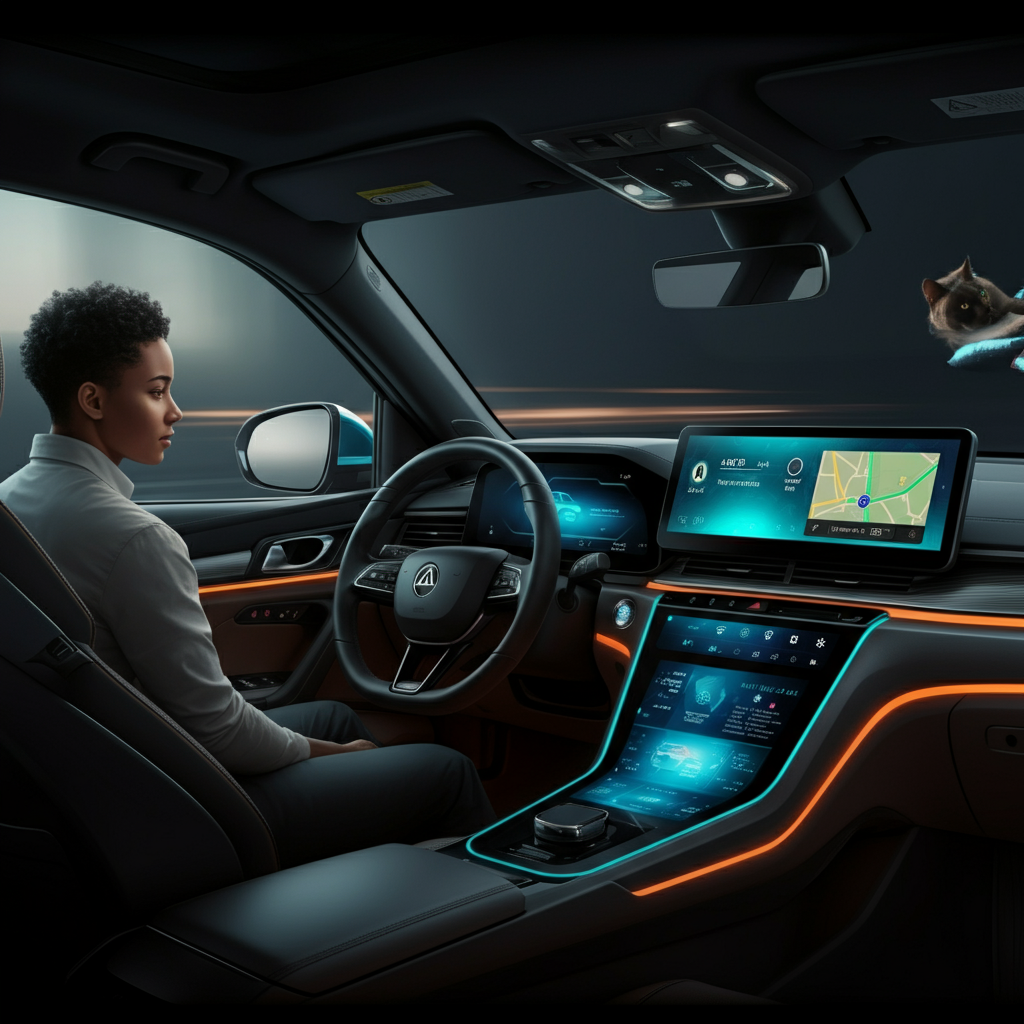
The automotive industry has embraced AI more aggressively than perhaps any other sector, with intelligent systems now handling everything from basic driver assistance to complex navigation decisions. These advances are making driving safer, more efficient, and more enjoyable.
Self-Driving Features
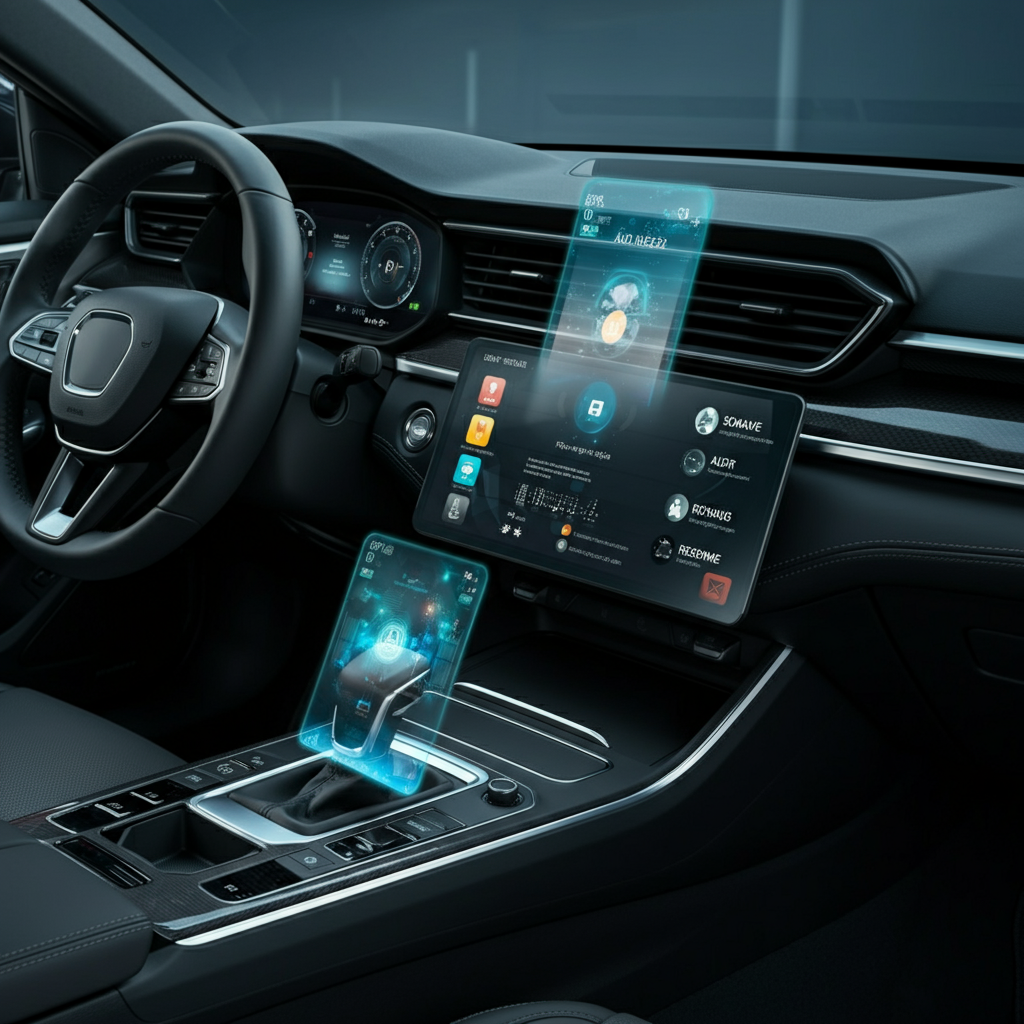
Autonomous driving technology has progressed from simple lane-keeping assistance to sophisticated systems that can handle complex driving scenarios. Tesla’s Full Self-Driving (FSD) technology uses neural networks trained on millions of miles of real-world driving data to make split-second decisions.
The system doesn’t just follow pre-programmed rules—it adapts to unique situations using AI reasoning. When encountering a construction zone or unusual traffic pattern, the AI analyzes the situation and makes decisions similar to how an experienced human driver would respond.
Waymo’s robotaxi service has demonstrated the potential of fully autonomous vehicles in urban environments. Their AI systems can handle complex scenarios like four-way stops, merging traffic, and even interactions with pedestrians and cyclists, all while maintaining safety standards that exceed human drivers.
Enhanced Safety Systems
AI-powered safety systems have become increasingly sophisticated at preventing accidents before they occur. Modern vehicles use multiple sensors and cameras to create a comprehensive understanding of the driving environment, with AI systems analyzing this data to identify potential hazards.
Mercedes-Benz’s Pre-Safe system uses AI to predict potential collisions and automatically prepares the vehicle and passengers for impact. The system can detect everything from an impending rear-end collision to a potential rollover, adjusting seat positions, tightening seatbelts, and even closing windows to optimize safety.
BMW’s AI-powered emergency braking system can distinguish between different types of objects—recognizing whether an obstruction is a pedestrian, cyclist, or vehicle—and adjust the response accordingly. This contextual understanding prevents unnecessary emergency braking while ensuring appropriate responses to genuine threats.
Intelligent Navigation
Navigation systems have evolved far beyond simple route-finding to become intelligent travel assistants that consider real-time conditions, personal preferences, and even predictive factors. Google Maps now uses AI to predict traffic patterns, construction delays, and even parking availability at your destination.
The system learns your driving habits and preferences, suggesting routes that match your style—whether you prefer highways or scenic routes, prioritize speed or fuel efficiency. It
